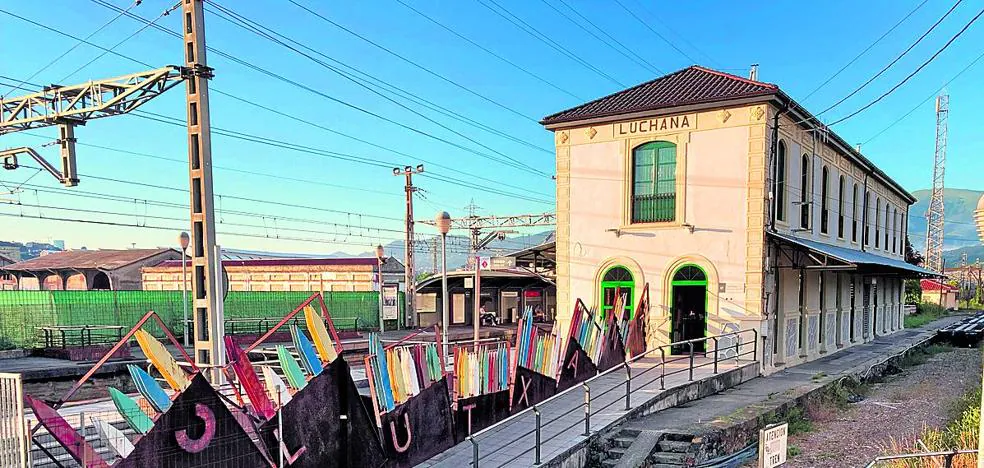The Lutxana station building dates back to 1894.
The Basque government commissioned a study for 87,000 euros that included the creation of a translation center for the centuries-old facilities and the La Robla line
A study commissioned by the Basque government will explore the tourism potential of Lutxana Train Station, in order to preserve its heritage value and provide it with new uses, such as a translation center for the Robla train. This measure is part of a plan to enhance and enhance tourism assets in the so-called preferential work areas, which includes initiatives in the region such as strengthening workers’ roads, rehabilitating industrial tourism spaces or adapting green roads.
Preparation for the study, which will take six months to write, will involve an investment of 84,700 euros. The report will identify the rehabilitation work to be carried out at the station to give it a complementary tourist use. “It will explore the possibility of designing the building and its external area. It is about restoring the spirit of a unique facility with interventions to be implemented in the future in canopies, lighting, and external facades”, they highlighted in the field of tourism, trade and consumption in the Basque government.
Lutxana station dates back to 1894. “It was built with the aim of organizing the connections connecting the AHV and its downstream basins with Balmaseda, and to combine wide and narrow tracks,” said project officials, who also noted that the Director of Rail Infrastructures (ADEV) There is work on the building, which has distorted its initial appearance, due to the two attacks that the building has been subjected to over the years. The last operation, in 2007, attributed to kale borroka, required reconstruction which was not completed until 2010.
New interventions will attempt to return it to its original state, while preserving its heritage value. Thus, for example, the presence of sectional arches and decorative moldings stands out on its facade, making it a first-class industrial building for the railway.
The station, where Francisco Henrich and Manuel Ora worked, was also the subject of an extension in the 1930s, and then an intervention was made in its hall with the aim of providing accommodation to the staff there. Since its construction by the Compañía del Ferrocarril de la Robla, the building has been flanked by train tracks: on one side the meter tracks from Balmaseda, and on the other the wide double track of the train from Bilbao to Portugalete. By agreement with the operators of this line, it was agreed to install waiting rooms for first and second class passengers, baggage storage, a locker for the station manager, and a ticket office, which was located on the top floor for users to have access to. Right on this hike through a metal walkway over the Robla train tracks. From the ticket purchase space, there was a set of stairs from which to go down to the platform. Another lane allowed you to cross this lane to go in the opposite direction.
Conferences and forecasts
The new Interpretation Center will contain a viewing area to be delimited, which may occupy rooms inside as well as outside the building. There will also be a reception area, conference and projection space, as well as an area and technical systems to ensure horizontal and vertical accessibility. On the ground at platforms height will be the Railroad Industrial Heritage spaces, related to the old layout of La Robla (with its steam engines, mechanical hoists, points and other elements). In addition, it will be necessary to plan urbanization works in the area, with pedestrian walkways, green spaces and adequate parking.





